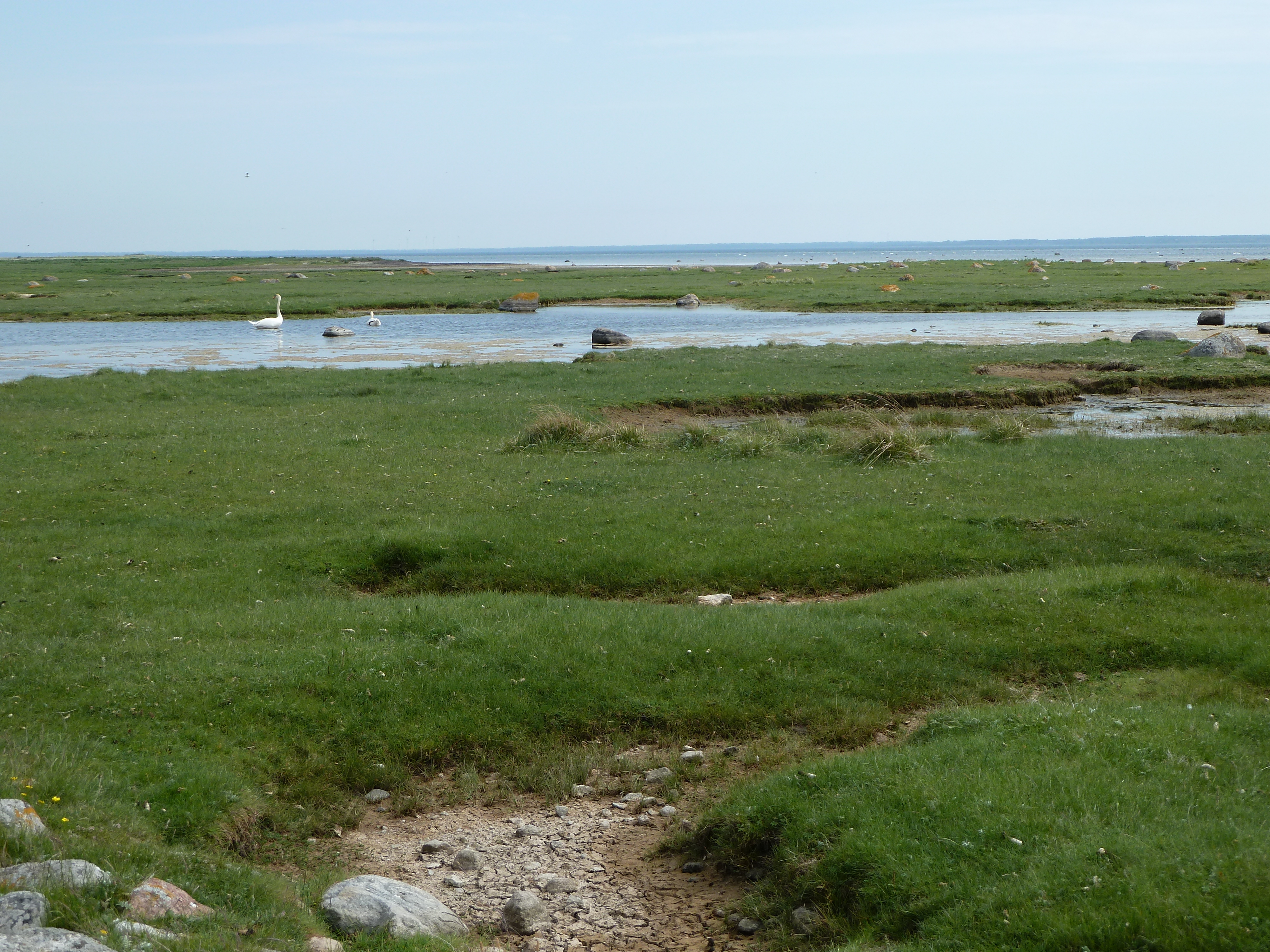
Plain natural or semi-natural grasslands with low-growing plants. On the one hand, the formation of the local vegetation is influenced by the rising of the earth: from the waterline to the land, there are clearly different zones of vegetation, the width of which depends on the topography, sediments, and the height of the ground. On the other hand, coastal meadows are shaped by man: by grazing domestic animals and mowing the hay, the vegetation cover has been kept low and rich in species, and favourable living conditions have been created for different species of birds.
Coastal meadows with low grass are important nesting and feeding grounds for many birds, especially Charadriiformes. When the grazing and mowing ceases, these valuable habitats will overgrow with reeds, and turn into shrublands and forests. In this way, many plant and animal species would lose their habitat, which is why it is important to continue the normal management of these areas.
As the water of the Baltic Sea has low salinity, the soils of the coastal meadows are not very saline either, although sometimes, they still have patches of marshes with higher salinity (1310).
Estonia has the most extensive coastal meadows in Saare County, Hiiu County, Lääne County, and Pärnu County.